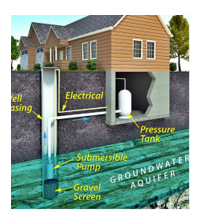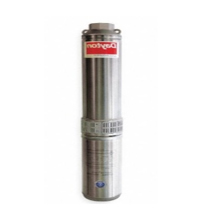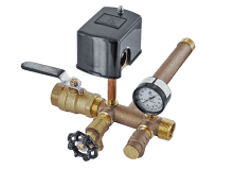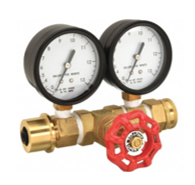When buying a home with a private well, most people want to know how the water tastes. More importantly, a home buyer should want to know if the well is functioning properly. Therefore, we offer well function inspections that provide a review of all the visible well components and report whether the integral parts are functioning as intended. This inspection includes checking the condition and height of the well casing and cap. An above ground well cap should be checked for tightness to ensure unwanted invaders or debris cannot end up inside and possibly contaminate the well. The pressure tank, pressure switch and pressure gauge are inspected. The pressure tank is tested to make sure the tank is not waterlogged. The flow rate (gallons per minute) and the drawdown and recovery rate of the well water are also tested to make sure there is an adequate supply of water.
Our goal is to conduct a thorough examination with a functional water flow test to assure our clients that they have a functioning well system. If the system is not functioning or if repairs are needed, we will report it. Unfortunately, there is no absolute way to predict how long an underground well will produce water or if it will be able to handle increased usage for a larger family. Our inspection will yield useful information on the condition of the system at the time of the inspection, and often uncovers defects which can save the purchaser a large, unexpected expense. There are many different types of well systems ranging from shallow wells to deep wells, from artesian wells to drilled wells.

Submersible Pumps - They are centrifugal pumps found in deep wells which are common in most new homes today. They have a great advantage over other types of pumps because they are fully submerged in water and push the water up to the home instead of drawing the water as jet pumps do.

Jet Pumps – They are mounted above ground and draw water up through a suction pipe. Popular in areas with higher water tables and warmer climates. Your pump selection will vary according to water levels. There are deep well pumps and shallow well pumps.

Pressure Switch – The pressure switch turns the pump on and off. There should be a 20-psi differential for a typical house well pump. The settings are normally 30-50 or 40-60 psi
Pressure Gauge – The pressure gauge is an indicator to determine the high- and low-pressure settings and it does not affect the performance of the pump. Oftentimes, these gauges are found not to be working and can easily be replaced.

Recovery Rate – This refers to the amount of water that evacuates the tank before the pressure switch will activate the pump. Drawdown is affected by the pump, the size of the tank and the pressure settings that govern your water system. Recovery refers to the time it takes for the tank to recover from switching off.
Flow Rate – This refers to the (GPM) gallons per minute that the well is producing. The flow rate in a smaller home should be at least 3 gallons per minute. The flow rate is checked at the beginning and the end of the well inspection to get an average.

Learn more at these valuable sources
Please call Five Star Home Inspections @ 855-500-3744 Ext-1 to schedule or add a Well Function Inspection today.